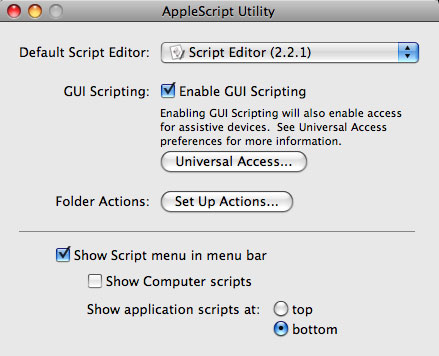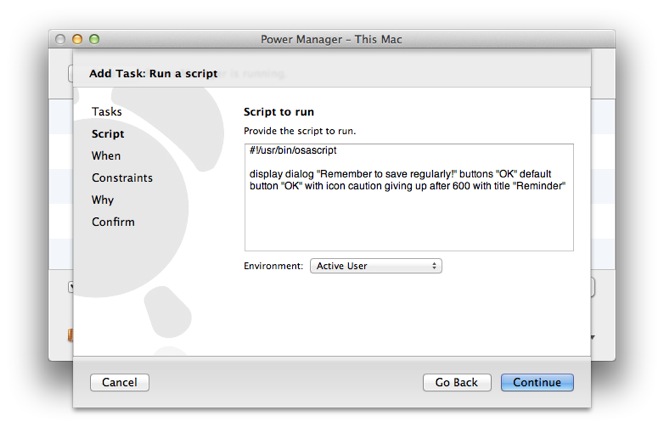

I have "hardened" the script because if an existing Finder window is not open when the script runs, it will not be able to retrieve the target of window 1 and generate an error. This is the only method on this page that can do this, as the other methods are reliant on return.I have revised your script, and the following works on my macOS High Sierra 10.13.3 system using one of my custom tag names. Thus, this method is completely error-free, even when being run outside of its larger, surrounding code. scpt file, and without having to invoke the return command in the process. The simple run script method saves the day: it restarts the second. The specific type of scenario that I've just explained is where the run script restart method truly shines.
APPLESCRIPT MACTRACKERSAFEOFF CODE
So, I messed around with the code some more, and learned about run script. It was only running one subroutine of the other script. scpt file cannot fully comprehend the significance of return, because it was never truly running the other script. To be fair, this error makes sense the first. scpt file, once the script has completed, a dialog box containing the following error is presented to the user: scpt file when return on run is used in the second. scpt file does in fact successfully restart the second. (This restart method was provided in a previous answer to this question.) scpt file is rife with "Start over" buttons in nearly every dialog, employing: return on run (To accomplish this, I use the method described here.) scpt file it skips over the entire script, and only runs the code that is found in one, specific subroutine. scpt file calls a specific subroutine of a different. scpt file that automatically runs when my computer wakes from sleep. This is going to get a little confusing, so bear with me. When should one use this method of restarting? The -n is necessary because, practically speaking, the AppleScript app technically closes after the second instance has been created, even though this may not appear to be the case based on what one sees on their screen. The -n allows a new instance of the application to open, even if an instance of this application is already running. app file using AppleScript, then use this: if buttonChoice is "Start over" thenĭo shell script "open -n " & quoted form of "/Users/Me/Desktop/My app.app"ĭo shell script "open -n " & (quoted form of (POSIX path of (path to me))) With the same underlying premise, if you want to restart an. I learned about run script from a comment by user Camelot on the following webpage:Ĭall Another Applescript | Apple Communities scpt file, and then quits the current instance. This code simply creates another instance of the currently running AppleScript. Or, alternatively: if buttonChoice is "Start over" then Run script "/Users/Me/Desktop/My script.scpt" scpt file in AppleScript: if buttonChoice is "Start over" then This method is not "better" than the other methods that have been provided it is merely just another way of approaching things.

I've discovered another method to restart an AppleScript.

If you send the input to a subroutine, then you can have a restart function all while having access to the input contents. The following code example assume that the Run AppleScript action starts with an on run command without any list, e.g.


 0 kommentar(er)
0 kommentar(er)
